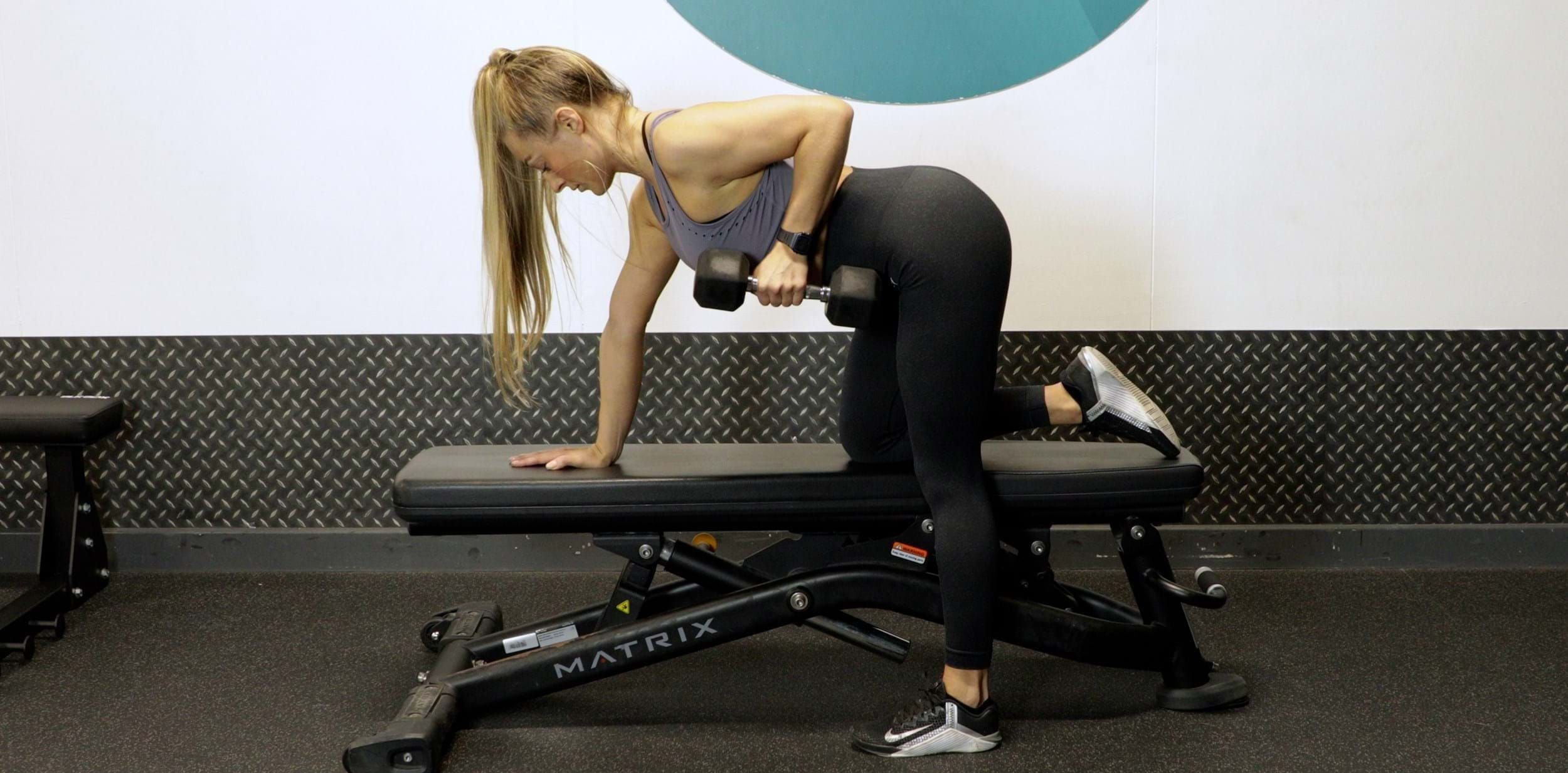Single Arm Dumbbell Rows
What Is A Single Arm Dumbbell Row?

The single arm dumbbell row is a bent over row variation which trains the back unilaterally and rests the leg and arm on the non-working side on a bench for stability.
The one arm dumbbell row works the latissimus dorsi, rhomboids, trapezius, and rear deltoids. Using the bench to keep the torso stable and at a hinge reduces the involvement from the core and lower body, meaning the intended muscles can be targeted and sufficiently challenged.
This is a great exercise for those new to rows, those who struggle with maintaining a hip hinge position or rigid torso, and anyone with strength imbalances between the two sides. It can also be helpful for those who find other row variations uncomfortable on the shoulders as the use of dumbbells allows for a neutral grip which can feel easier on the shoulder joint.
Check out some other row variations: incline row, seated cable row, inverted row, TRX row, pendlay row,
Commonly Asked Questions On Single Arm Dumbbell Row
Single arm rows work the back muscles, namely the lats, trapezius, rhomboids, and rear deltoids, with the core and biceps also engaged.
Changing the grip can place more emphasis on certain muscle groups. An overhand grip challenges the lats more, while an underhand grip engages the biceps more.
All rows are great for building strength and size of the back. The single arm dumbbell row is a good variation for anyone who struggles to maintain good form in bent over rows, as the bench provides support and allows the right muscles to be worked. This movement also challenges the body unilaterally which can help to identify and minimise muscular imbalances, aiding overall strength and reducing injury risk.
If you do not have a bench, you can do the one arm dumbbell row by leaning the non-working hand on a surface that is hip height or below, and then hinging forward while maintaining a neutral spine.
You can also use a staggered stance and rest the non-working hand on your leg while leaning forward. This alternative does require greater stability so may need to use a lighter load.
Aside from the obvious difference that the single arm row trains one side at a time and the dumbbell bent over row trains both sides, the single arm row uses a bench for support and does not require the performer to maintain a hip hinge like the dumbbell bent over row does. This can be helpful for those who are unable to sufficiently challenge their back muscles before their hamstrings and glutes fatigue, or who struggle to protect their core while in a hip hinge.
Most people find they can lift more in the single arm row for this reason, as well as due to increased stability and more on the mind muscle connection from focusing on one arm at a time.
Single Arm Dumbbell Row Tips
The single arm dumbbell row can be a good row variation for those who struggle to maintain a hip hinge position. However, it’s still important to have good form in this exercise to avoid putting pressure on the spine and ensure the intended muscles are worked. Press the non-working hand into the bench so it actively supports your body and tuck your ribs closer to your pelvis to maintain a neutral spine.
You should also choose a weight you can move both ways with control rather than having to throw the weight up.
How To Do A Single Arm Dumbbell Row
Grip a dumbbell in your left hand, then place your right knee and right hand on the left edge of a bench. Your left leg should be planted flat on the floor just short of hip width distance from your right knee, and your left arm extended down.
Tuck in your ribs to create a neutral spine and engage your core.
Press your right hand firmly into the bench to create a strong base and then row the dumbbell towards your waist. It can be helpful to think about pulling your elbows back towards your hips.
Once your triceps are parallel with the floor, slowly extend your arm to lower the dumbbell back to starting position.
If you’re not sure if any of the above exercises are suitable for you, please consult your doctor before you start it. Need guidance on how to perform the exercise? Ask a personal trainer at your gym.